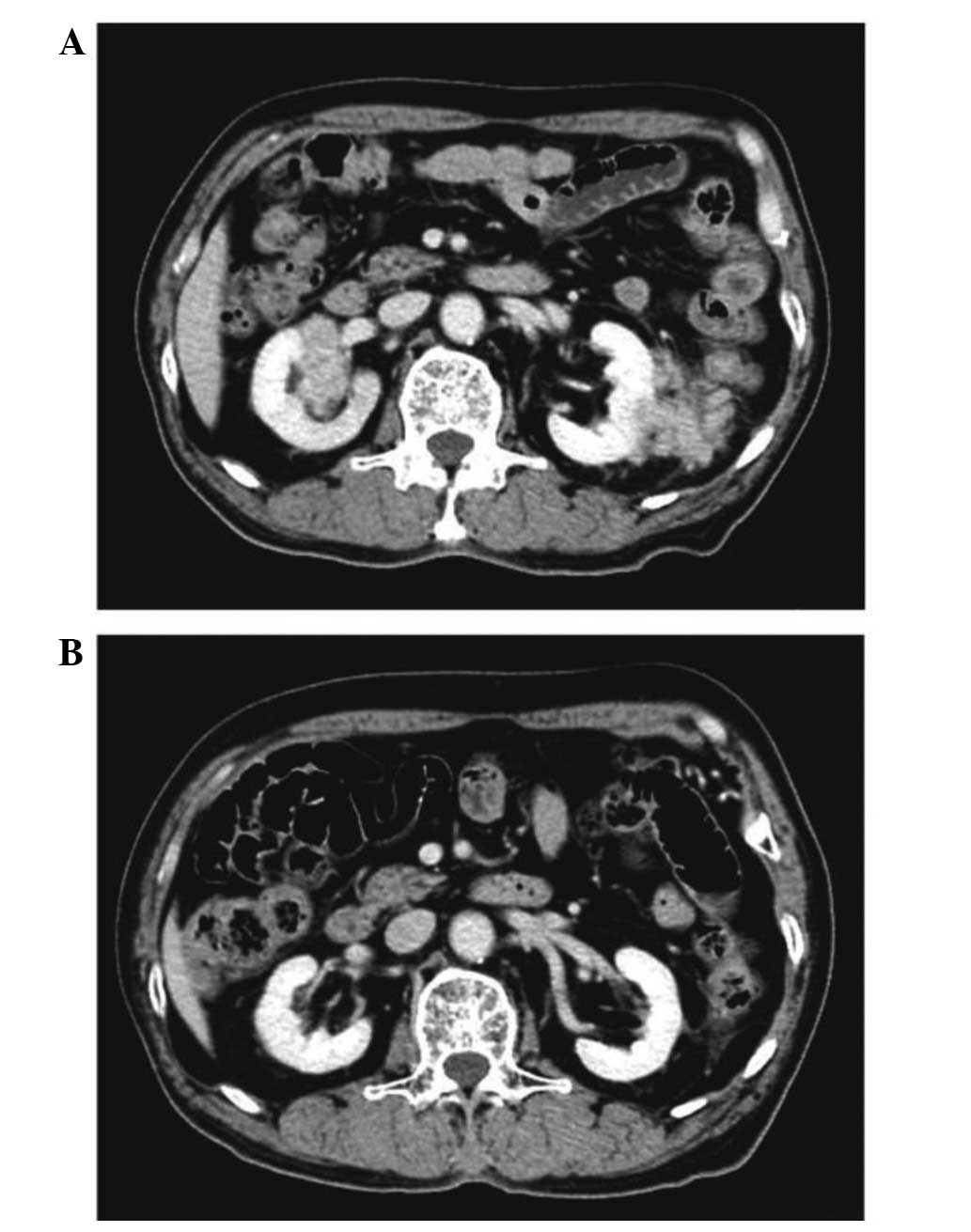Multiple myeloma with intracranial extension and bilateral renal infiltration: A case report and review of the literature
- Authors:
- Published online on: August 4, 2015 https://doi.org/10.3892/ol.2015.3567
- Pages: 2337-2340
Metrics: Total
Views: 0 (Spandidos Publications: | PMC Statistics: )
Total PDF Downloads: 0 (Spandidos Publications: | PMC Statistics: )
Abstract
Multiple myeloma (MM) is a rare hematological malignancy, characterized by uncontrolled proliferation of plasma cells in the bone marrow. MM is usually confined to the bone marrow, however, it may occasionally infiltrate other tissues, which is known as extramedullary plasmacytoma (EMP). The majority of EMPs involve the head and neck region, although different anatomical sites, including the gastrointestinal tract, central nervous system, thyroid gland and breast may also be affected. The simultaneous presentation of EMP in the kidney and head is rare, presenting diagnostic challenges due to its unusual location and non-specific or absent symptoms. To the best of our knowledge, no case of extramedullary plasmacytoma presenting with simultaneous renal and intracranial infiltration has been reported in the literature thus far. However, the present study reports a case of primary renal and intracranial extramedullary plasmacytoma in a 76-year-old male patient. The patient presented with a swelling over the right side of the forehead, which had slowly increased in size prior to hospital admission. The swelling was associated with dizziness and weakness, without bone pain. Contrast magnetic resonance imaging suggested an osteolytic skull lesion with intracranial extension. Abdominal enhanced computed tomography scanning revealed a large tumor mass extending around and into the kidneys. Immunohistochemical examination of the renal tumor biopsy, and blood and serum samples, as well as immunoelectrophoresis of serum proteins, resulted in a diagnosis of EMP being proposed. Therefore, the patient was administered with two cycles of cyclophosphamide and thalidomide in combination with dexamethasone. Follow‑up imaging performed 4 months later revealed almost complete disappearance of the intracranial tumor mass and renal infiltration. The current study also presented a review of the literature. This study revealed that EMPs may co‑exist with MM or present as the main symptom of MM. The diagnosis of an EMP is complex and requires radiological, hematological, biochemical and histological investigation. At present, no guidelines for EMP treatment have been established and thus, treatment options include surgery, chemotherapy and radiotherapy, either alone or in combination. We hypothesize that combined treatment may provide the best patient outcome.












